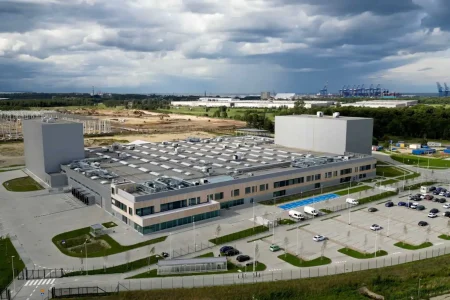The energy transition is to succeed with green hydrogen. But the potential in Germany remains limited. This is due to a lack of green electricity, high costs and too few electrolysers.
Green hydrogen should at least serve as a basic material in industry and ensure the success of the energy transition in some areas of mobility. “Hydrogen can be produced using various processes, whereby the greatest potential is seen in the electrolysis process, in which water and electrical energy are combined to form hydrogen,” Springer authors Mirko Kruse and Jan Wedemeier describe the basic process in their journal article Potential green hydrogen: long road to development, short time to implementation starting on page 26.
Currently, a good 60 TWh of hydrogen is produced annually in Germany, 55 TWh of it by means of steam reforming, in which methane, i.e. natural gas, is split into CO2 and H2. This hydrogen is primarily used in the chemical industry. The process is extremely harmful to the environment due to its high CO2 content and is therefore to be replaced by electrolysis, in which water is split into O2 and H2 using electrical energy.
5 GW electrolyzer capacity by 2030
However, there are hardly any electrolysers. According to a study by the German Aerospace Center (DLR), their capacity is to be increased fivefold from the current level to 5 GW by 2030, and then to 50 to 80 GW by 2050. Assuming a capacity of 80 GW and an annual operating time of 5,000 hours per electrolyzer (which is already very high), this would amount to 280 TWh at 70 percent efficiency. In addition to the chemical industry, this would also cover the needs of mobility, especially air and sea transport and some parts of heavy logistics, which rely on high energy densities. However, nothing would be available for the heating market, which currently consumes about 750 TWh annually. It would still need 400 TWh in 2050, even with all the efficiency targets.
But that is pie in the sky. Much closer are the targets for 2030, when the aforementioned electrolysis expansion targets and known efficiencies could generate 17.5 TWh to meet a maximum demand of 20 TWh. Given the current potential of about 135 GW of installed capacity and a renewably generated electricity volume of 250 TWh in 2020, this also seems possible.
In contrast, there are the costs. The energy agency dena estimates annual costs of one billion euros by 2030. Part of this will be covered by the National Hydrogen Strategy. This is intended on the one hand to raise electrolysers to industrial production level, and on the other hand to build up an infrastructure for transporting hydrogen where necessary.
Refineries as electrolysis sites
The plans have progressed furthest in German refineries. Their green hydrogen demand, primarily also as a feedstock, is estimated at 2 GW for 2030. Three projects are currently underway in Germany. One of them, initiated by bp and Ørsted in Lingen in the Emsland region, is for the construction of an electrolyzer with a capacity of 50 MW. This is to produce green hydrogen from 2024. Later, the plant could be scaled up to 500 MW. Shell commissioned a 10-MW plant at its Wesseling refinery site near Cologne in 2021 that can produce up to 1,300 metric tons of green hydrogen annually. A 100-MW electrolysis plant is to follow from 2022. At the Heide refinery, a 30 MW electrolyzer is scheduled to come on stream from 2023. However, none of these projects operate on an industrial scale.
Without government funding through the National Hydrogen Strategy and various other public funds, however, these projects would not be feasible. That’s because the process is expensive and will remain so. “The cost structure for the production of green H2 is characterized by high fixed costs due to the high capital intensity,” Springer-Gabler authors Robert Staiger and Adrian Tanțǎu name one of the reasons in their book chapter Analysis of archetypal business models for green hydrogen on page 120. But it is not the only one. In addition to high fixed costs, the process in Germany would also suffer from high operating costs due to the price of electricity, which is among the highest in the world.








